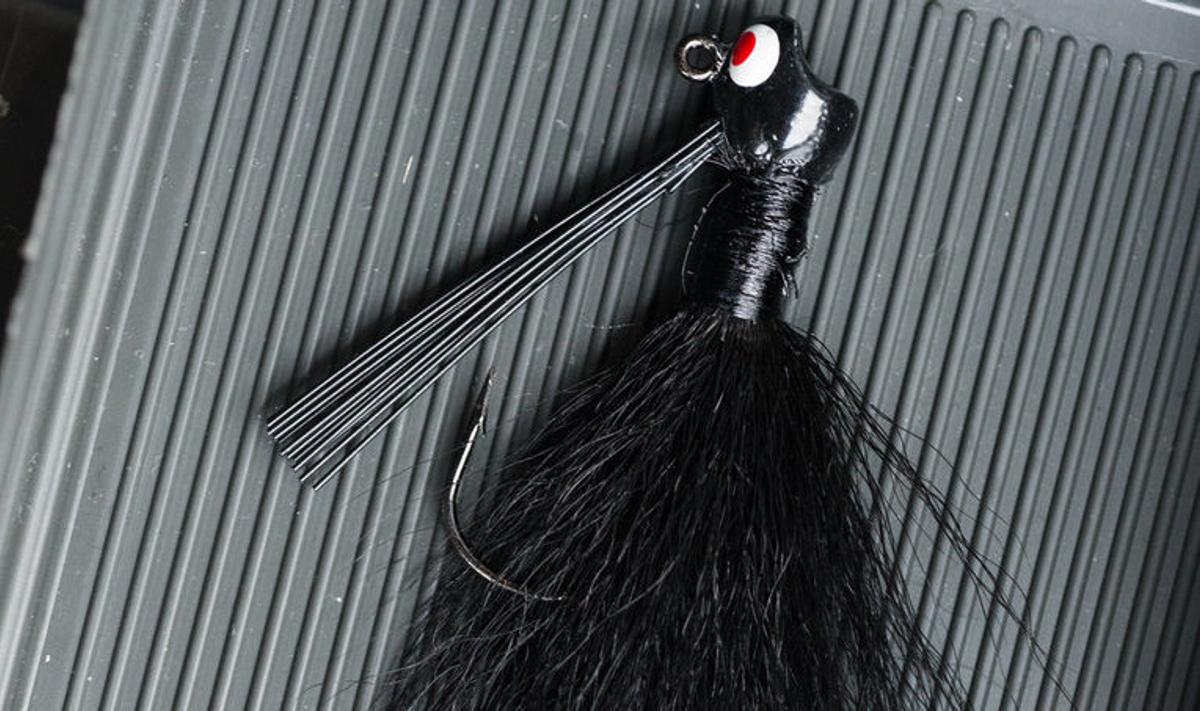4 All-Pro Tips For Fishing Bucktail Jigs
During those halcyon days of bass fishing in the 1960s, bucktail jigs and a pork split tail eel was the deadliest combo for bass.Although feather and hair have been replaced by silicone or living rubber skirts for flipping, casting and finesse jig tactics, jigs adorned with animal hair or feathers still shine in certain situations, especially during winter on clear lakes.A hair jig doesn’t look like much out of the water, but when dipped in water the hair opens up and pulsates to give the jig a lifelike appearance. A silicone skirt on a finesse jig tends to close up when soaked in cold water, whereas the hair or feather on jigs moves better in cold water to mimic baitfish or crawfish.Here are four tips on how to fish hair and feather jigs.
Bucktail Jigs Hair Options
Select hair jigs in 1/8-, 3/16- or 1/4-ounce sizes for cold water applications, but you can go bigger when the water starts to heat up. Use the 1/8-ounce model on calm days or slack water and the heavier jigs for windy days or fishing in current. You can fish the jig without a trailer or add a plastic grub trailer to give the lure more action.
Bucktail Jig Targets
Ledges and bluffs in the 15- to 18-foot range are key places to work the hair jig. Since a hair jig falls so slowly you will have to fish a different lure if bass are deeper.A gradually tapering gravel bank is another favorite spot for fishing a hair jig. In late winter, present the hair jig 5 to 10 feet deep along a channel swing bank where it flattens out into gravel.
Bucktail Jigs Retrieves
Many strikes occur while bucktail jigs slowly sink right on the cast, so watch your line closely. Once the jig reaches the bottom, slowly reel and try to keep bumping the jig into rocks. The more collisions you can cause on the retrieve, the more action you will get, and therefore the more bites you will get.
Float-And-Fly Your Bucktail Jigs
This technique is deadly for wintertime smallmouth and spotted bass that suspend over deep water on clear, highland reservoirs.Affix a small bobber about the size of a quarter on 4- to 6-pound line and tie on a 1/32-, 1/16- or 1/8-ounce jig made of feathers or hair about 11 to 13 feet below the bobber. Cast the rig on an 8- to 11-foot spinning rod to bluffs, points and steep rock banks near channels.Work the rig back to the boat with short twitches or in choppy water let it sit so the wave action can activate the jig.
Updated July 28th, 2020 at 6:06 AM CT


